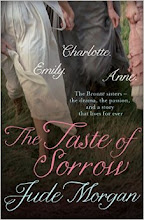Viper Wine tells the story of Lord Kenelm and Lady Venetia Digby, happily married and somewhat oblivious to the rumblings of imminent civil war in 1630s England. Now, the first thing that is of interest here is that these characters were once real people. I find that I really enjoy fictionalised accounts of real people's lives. Fine, you say, but what makes their story novel-worthy? I've never heard of Kenelm and Venetia Digby, you say, so why has Hermione Eyre chosen to fictionalise their lives? The answer is simply that they were each extraordinary: Kenelm (I pronounce it with a silent "l" for my own aesthetic purposes, though this may well be entirely wrong) was a natural philosopher, a scientist in an age when science was looked at askance by common folk, named witchcraft by some and outrightly poo-pooed by others. Venetia, however, a great beauty in her youth, is perhaps of greater interest to a reader cynical of our own age's insidious obsession with appearance, for the lengths to which she will go to retain her youthful radiance is almost instantly recognisable from the pages of current women's magazines. The Viper Wine of the title is exactly that, a concoction imbibed by Venetia and her friends, the active ingredient of which is snake poison. It is no different to a Botox injection, and the result, by all accounts, was virtually the same: a china smooth complexion and a rigid, blank expression.
So much, then, for the content - and I must be honest here and say that as plots go, this is fairly thin. BUT - and this is the entire crux of the matter - the way this book has been dovetailed together, written, illustrated with both images and genuine documents, is a revelation. Eyre's style is at once lyrical, funny, grand and chatty. Viper Wine is both personal and impartial, both gossip mag trash and scholarly account. A favourite line from early on:
"She has filled her paps out with paper and her eyebrows are made from mink hair and egg white, but she looks good on't."
It makes me smile. It also makes me frown - have women really poisoned and tortured themselves in this manner for so many centuries? Does nothing change? Do we not learn?
And then, on top of all this, Eyre has somehow injected into this decidedly Stuart story, our own world. The modern seeps through the cracks in Gayhurst House like snakes through chicken wire. It is subtly done, and with a surgeon's precision; anachronisms abound. When Kenelm returns from an overseas voyage, he gives a talk to high minded individuals who will spread the word of his discoveries; in other words, he holds a press conference:
"You're not the kind of man who turns back, though, are you?" said Michael Parkinson, ingratiatingly.
"Are you an authoritarian below decks? Do you swing the cat-o'-nine-tails?" said Jonathan Ross, a fool with weak 'Rs'.
"Ask my crew," said Kenelm.
"We did," said Ross. "Some of them liked it a lot."
[...]
"And did you divide your profits amongst your crew?" asked Paxman, wincing with his own impertinence.
Later, Kenelm sings to his son, and the lyrics are Bowie. Words like "nanotechnology" are scattered carefully over the pages, yet never seem out of place embedded in the archaic language of Cromwellian England. It is beautifully done.
As well as the central players and beautiful writing, there is so much else in this book to fall in love with: the comically grotesque figure of Ben Jonson ("He spoke almost entirely in his own verses now... His brain had become the maggoty, abbreviated book of his own quotations"), and the scene in which Inigo Jones puts together a court masque is so craftily layered with image and meaning that it becomes far more than just another chapter in a good book:
"Inigo Jones [was] in the gantry, using a megaphone. 'These shows are nothing else but light and motion,' [...] said Inigo, sitting in his director's chair."
Mary Tree is another delight; her tragicomic story weaves in and out of the main action until the very end, when she finally Miss Marples her way into the primary plot.
"Inigo Jones [was] in the gantry, using a megaphone. 'These shows are nothing else but light and motion,' [...] said Inigo, sitting in his director's chair."
Mary Tree is another delight; her tragicomic story weaves in and out of the main action until the very end, when she finally Miss Marples her way into the primary plot.
Stylistically, this novel is very filmic. Eyre frequently uses the cinematic technique of cutting between Venetia and Kenelm, juxtaposing their actions with short, fast edits. In places, I realised that what I saw in my mind was the BBC's 2005 Casanova. The sense of heightened reality, of dark, tragic glamour, is very Baz Luhrman.
I think that finally, in a nod to those bookworms who, like myself, still shun the e-reader, it is worth mentioning that this is also physically a remarkably pleasing book. It is, in hardback, a lovely size and shape, comfortable to hold, and I love the typeface.
Despite its anachronistic heart, then, Viper Wine paints, like Van Dyck in the book, a very true picture of Noble (and sometimes noble) Stuart Britain. It is fun, exciting, pertinent and above all, utterly enjoyable. Taste Hermione Eyre's lyrical alchemy for yourself.
I think that finally, in a nod to those bookworms who, like myself, still shun the e-reader, it is worth mentioning that this is also physically a remarkably pleasing book. It is, in hardback, a lovely size and shape, comfortable to hold, and I love the typeface.
Despite its anachronistic heart, then, Viper Wine paints, like Van Dyck in the book, a very true picture of Noble (and sometimes noble) Stuart Britain. It is fun, exciting, pertinent and above all, utterly enjoyable. Taste Hermione Eyre's lyrical alchemy for yourself.

